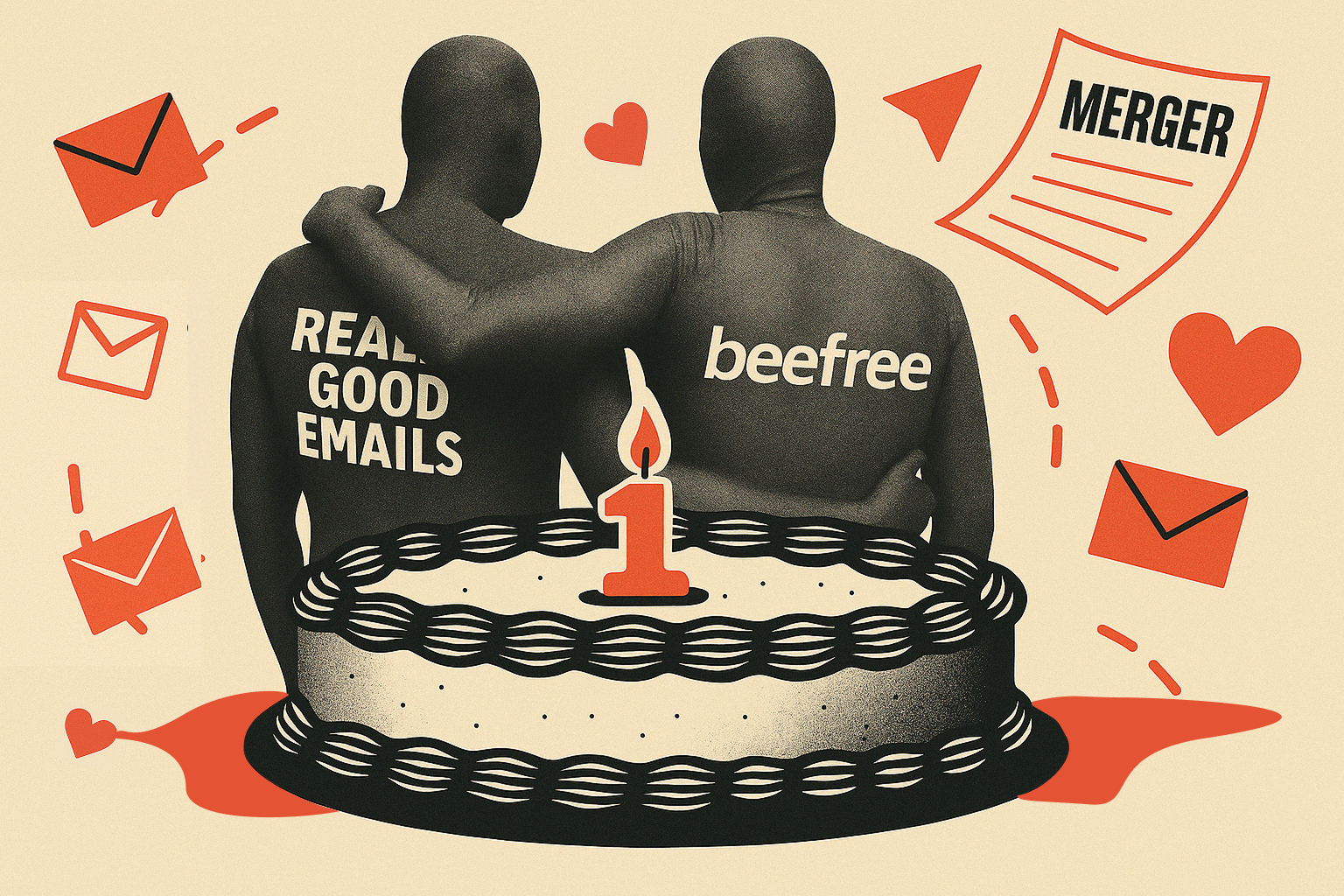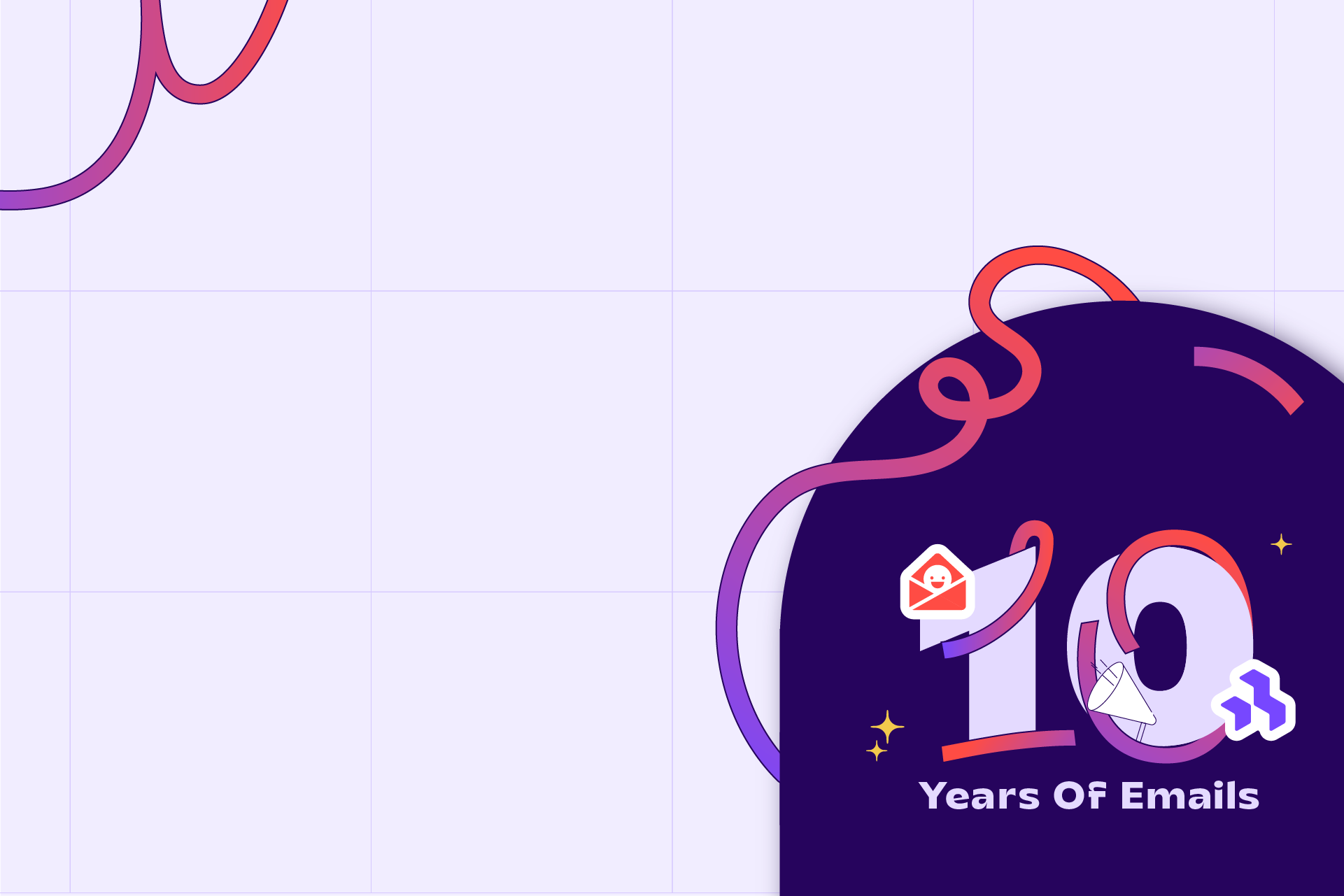SaaS is notoriously tough yet exciting to work in. Constantly at the forefront of technology innovation, home to the most complex tech stacks yet, and blessed by an abundance of first-party data, it should be the Eldorado of email makers. But is it really, in 2025?
As you know (and if you don’t, here is a handy reminder), every year we ask the RGE email community to spill the beans on the latest evolutions of their jobs. This time around, we’re slicing the data for the SaaS business only, to get a comprehensive overview of what the heck is going on in the SaaS email makers’ lives, and what the future looks like for them.
The SaaS inbox has grown up
Remember when, a few years ago, email was that part of the marketing strategy that people picked up as they went on? When a “campaign” meant slapping a subject line on a product update and hoping for the best?
More often than not, email was a side hustle for professionals who did something else as a primary activity. Guess what - Those days are over. Long over.
Today, email in SaaS isn’t a one-person task or a marketing afterthought — it’s a strategic, team-led function that touches every part of the business. And according to this year’s survey — with responses from 1,677 email makers — that shift is accelerating faster than anyone expected.
This isn’t a “we should be better at email” situation. It’s a “we’ll fall behind if we don’t get this right” moment. If you work in or with a SaaS brand, here’s what the smartest teams are doing differently — and why it matters more than ever.
If you’re looking for cool SaaS email examples, we have a few in store for you!
1. Email is no longer a side gig — It’s core strategy
Let’s start with a wild stat: in 2025, it takes a SaaS professional an average of 6.4 business days to send a single email. That’s a 44% increase from 2018.
Let that sink in.
The pace of email hasn’t slowed down because people are slacking off. It’s slowed down because email has become more complex, more cross-functional, and more critical to growth.
Why?
- Email is predictable: You can forecast engagement and revenue.
- Email is measurable: KPIs like MRR, LTV, churn, and engagement are tightly linked.
- Email is scalable: Unlike ads, email gets more efficient as your audience grows.
- Email is owned: In a world where cookies are crumbling and CAC is soaring, email is the safe haven.
No surprise then that more SaaS orgs are building full-time email teams — and giving them a real seat at the strategy table.

2. SaaS email requires deep experience (not just hustle)
The average SaaS email pro in our survey has 6.8 years of experience — over a year more than the industry average.
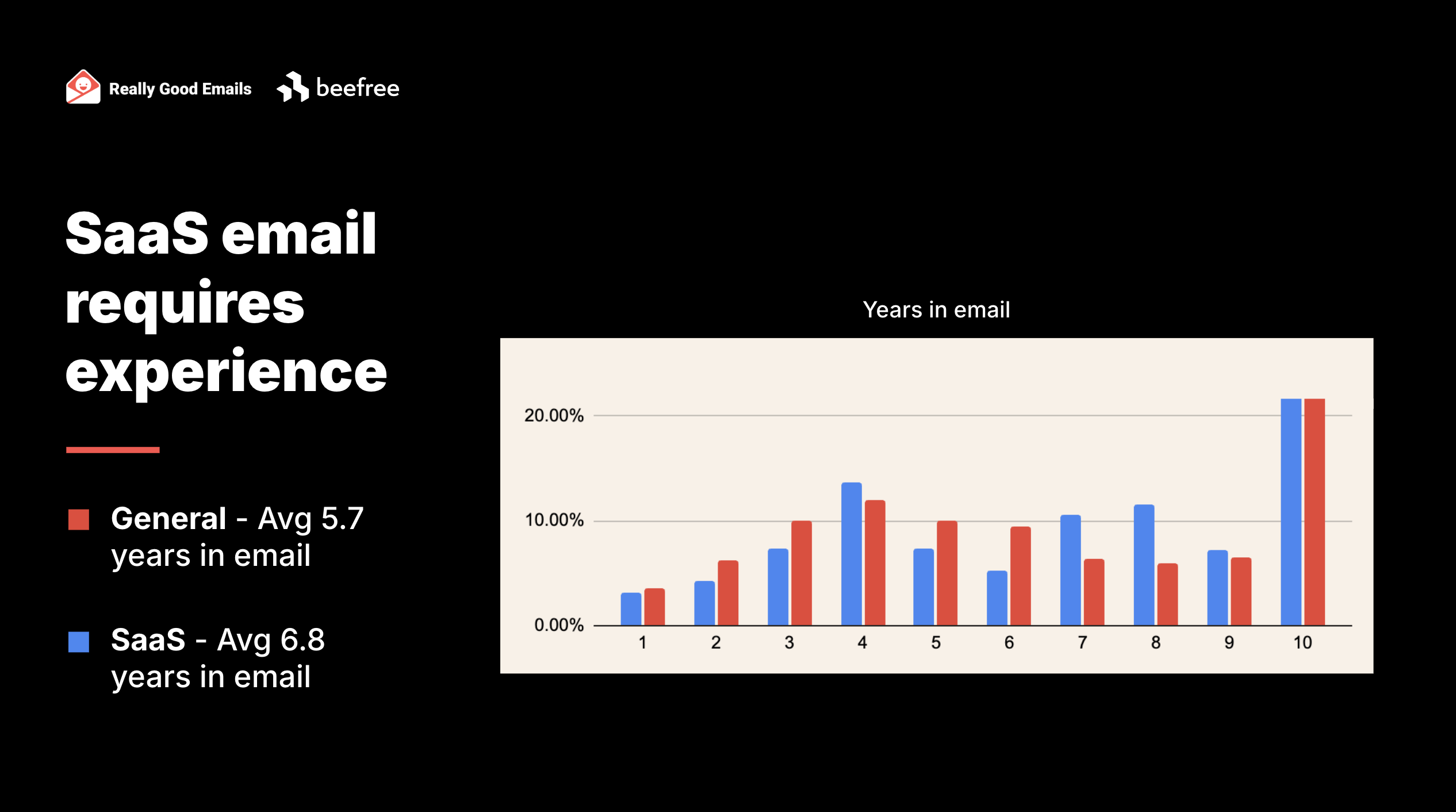
That extra time matters. Because SaaS email isn't just about sending beautiful newsletters. It’s about:
- Navigating complex tech stacks
- Aligning with product and data teams
- Mapping out behavioral automations
- Syncing lifecycle messaging with growth loops
- Surviving legal reviews, QA, and compliance gates
In short: if you’re running SaaS email on muscle memory and Canva templates, you’re likely missing the deeper value of the channel.
3. Email teams are specializing — Fast
One of the clearest shifts in the data? The collapse of the “email generalist.”
- The share of multi-hat email roles dropped 22%
- Writers fell 33%, largely due to the rise of AI copy tools
- Designers grew +20%
- Strategists emerged as a real title: 11% of SaaS email pros now hold it
- Developers in SaaS are 40% more common than average
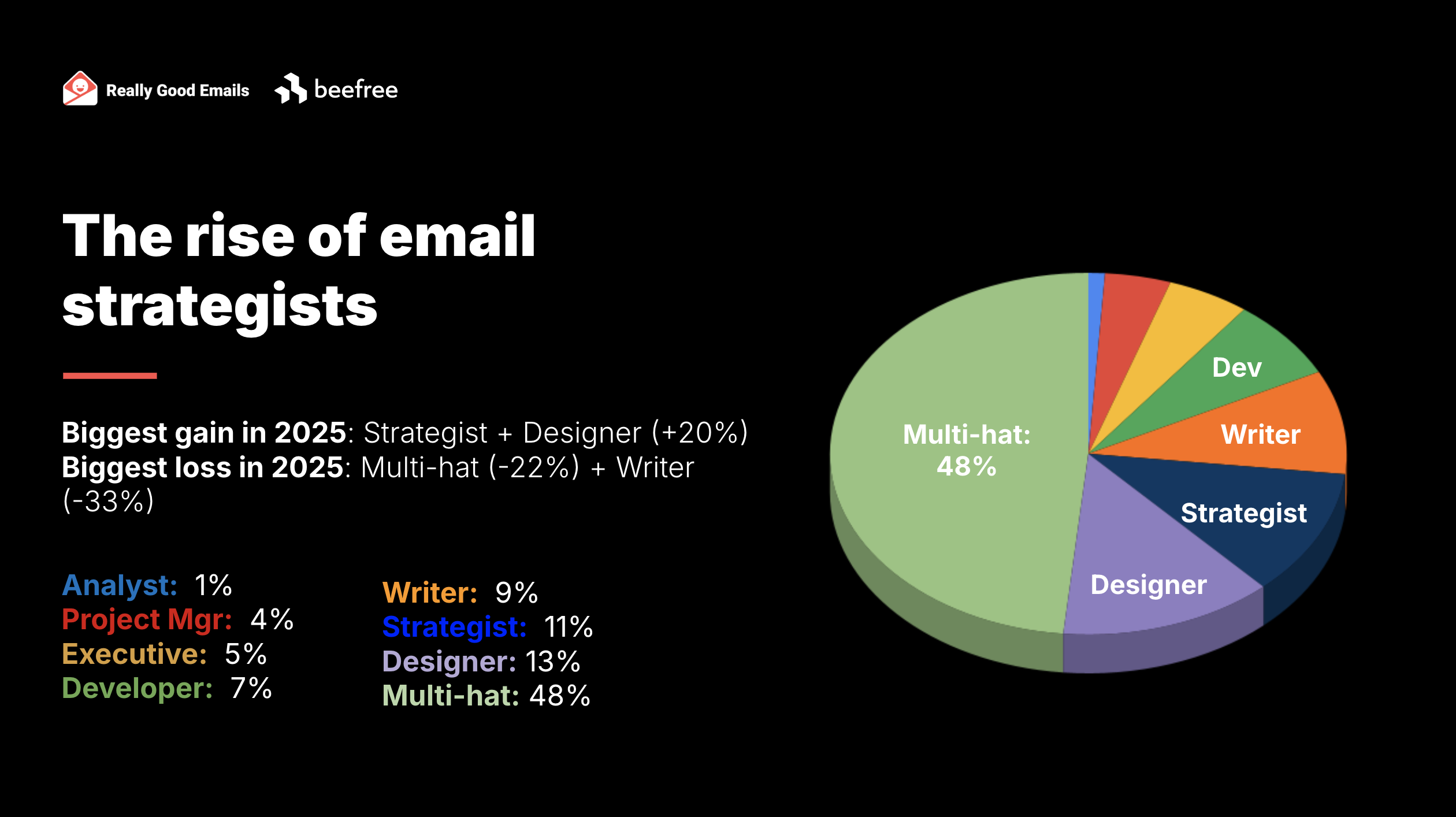
This evolution isn’t random — it’s necessary. With email campaigns now requiring segmentation, personalization, testing, compliance checks, and dynamic design, you simply can’t expect one person to do it all.
What we’re seeing instead is a model that looks a lot like a content ops team: a strategist scopes the message, a copywriter drafts it (often with AI), a designer builds the layout, a developer handles dynamic content, and a QA or PM ensures it lands clean.
Pro tip: If your email program still relies on one person for everything, it’s not just inefficient — it’s risky.
4. AI has changed the game — But not replaced it
Last year, 78% of email pros reported not using AI in their work. This year? 66% do. In SaaS, that number is 80%.

The rise is real. But so are the blind spots.
What’s working:
- Copy generation: Subject lines, CTAs, blurbs — AI’s fast and “good enough”.
- Campaign ideation: Marketers are using AI to brainstorm creative angles and to support their strategic choices.
What’s not (yet):
- Personalization: Surprisingly underused in SaaS despite access to rich data. We see an incredible opportunity here. For inspiration, look at how companies like Miro use AI to tailor content for local markets.
- Coding: Fewer SaaS teams use AI to code — likely because of in-house dev strength and complex stack setups.
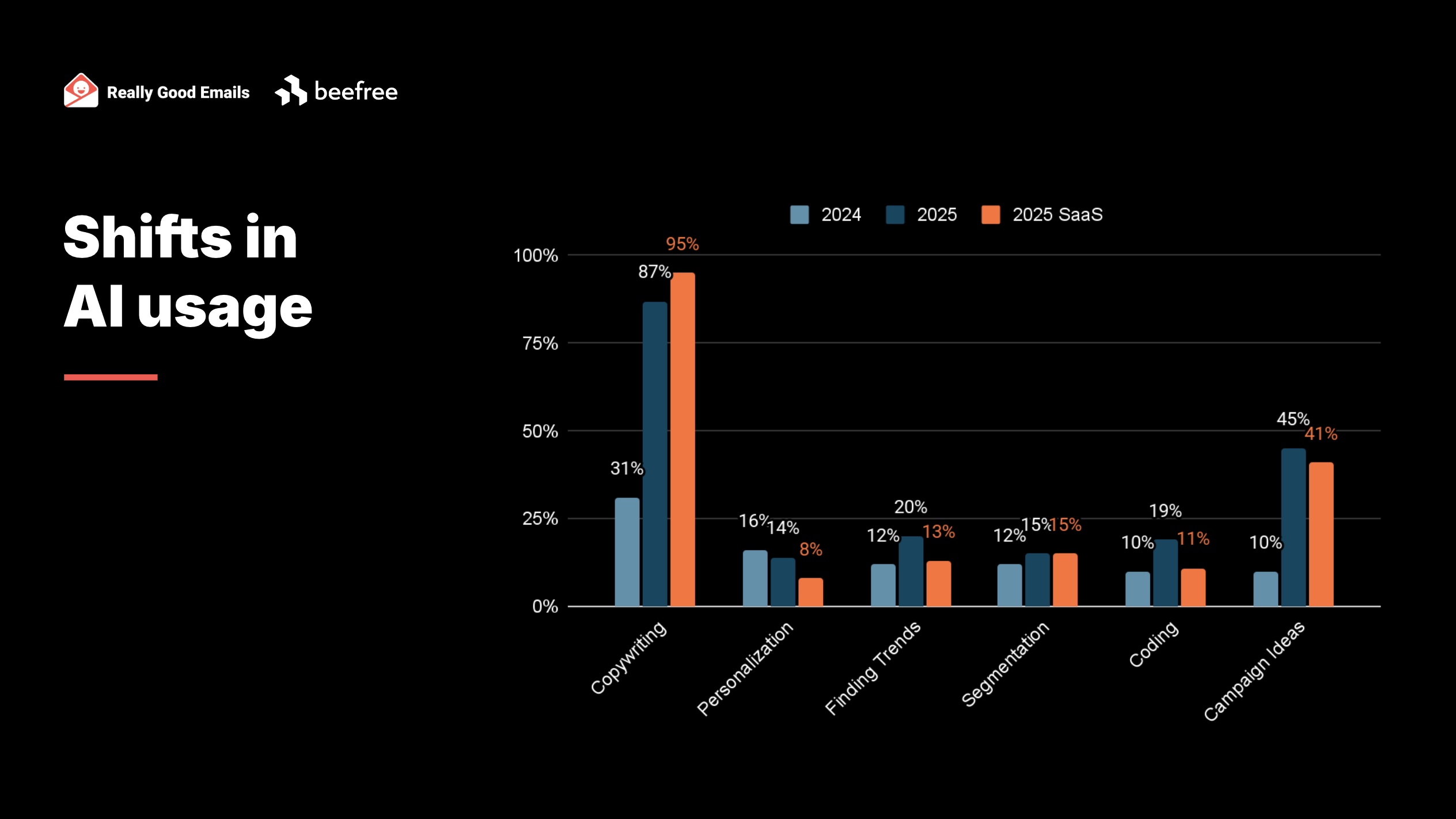
And here’s the plot twist: the more complex your email operation, the less likely you are to use AI. There’s even a slight negative correlation between AI usage and email volume or complexity.
Our hypotheses?
- Managing a high volume of emails might require a more standardized, less AI-dependent workflow.
- AI tools are not yet fully optimized for high-volume email production.
- Complex workflows often involve specific requirements and nuances that current AI tools cannot fully accommodate.
So what? AI doesn’t replace strategy, process, or deep knowledge of your customer. But it can lighten the lift — if you know where to apply it.
5. SaaS marketers love clicks — But they should watch revenue
When we asked SaaS marketers to rank their most important email metrics, here’s what came out on top:
- Clicks
- Opens
- Subscriber revenue
- Lifetime value (LTV)
- Click revenue
Notice something?
The top two metrics — clicks and opens — are engagement signals, not business outcomes. Compare this with industries like travel or finance, where subscriber revenue and LTV take the lead.
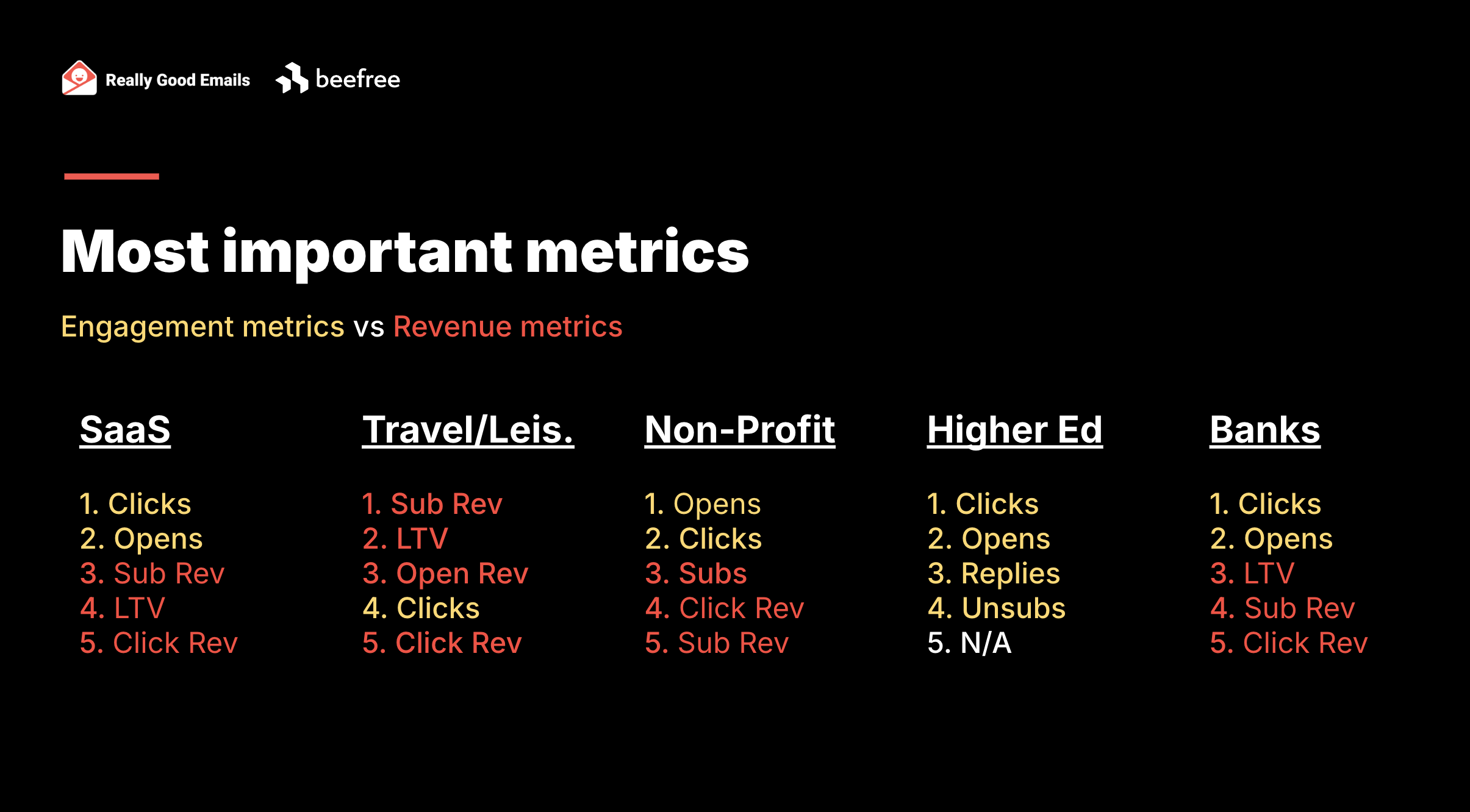
It’s a wake-up call. Many SaaS teams still treat email as an awareness tool instead of a revenue channel — even though email is one of the few marketing levers that can directly grow MRR.
Your move: If your team’s goals stop at “increased clicks,” push to track real revenue impact. What’s the churn delta on users who engage with lifecycle flows? What’s the average order value uplift from nurtured subscribers? That’s the gold.
6. No ESP does it all (and that’s OK)
Email platforms are improving, but we’re not in email utopia just yet.
- SaaS email satisfaction? A decent but not glowing 7.1/10 for the most used ESP in SaaS, HubSpot.
- 60% of companies use third-party tools to supplement their ESP.
- Even small teams are stacking tools to bridge feature gaps.

What do they add?
- Project management tools (for workflows)
- Design tools (for better visuals)
- AI copy tools (for speed)
- Testing/deliverability tools (for confidence)
- Template builders like Beefree (for all the above)
Bottom line: If your ESP doesn’t do everything you need — join the club. Building a modular stack that fits your process is smarter than waiting for one “perfect platform.”
The big picture: Email reflects your org’s maturity
If your SaaS email program feels chaotic, slow, or underwhelming — chances are, your internal processes are too.
Email exposes organizational strengths and cracks:
- Do you have clear goals?
- Are your teams collaborating well?
- Is ownership defined?
- Can you move fast, without breaking things?
The best SaaS email programs aren’t just well-written or well-designed. They’re well-run.
Interested in the full data?
Sign up to unlock the full 2025 RGE Industry Report — packed with even more insights, benchmarks, and juicy takeaways across industries.
